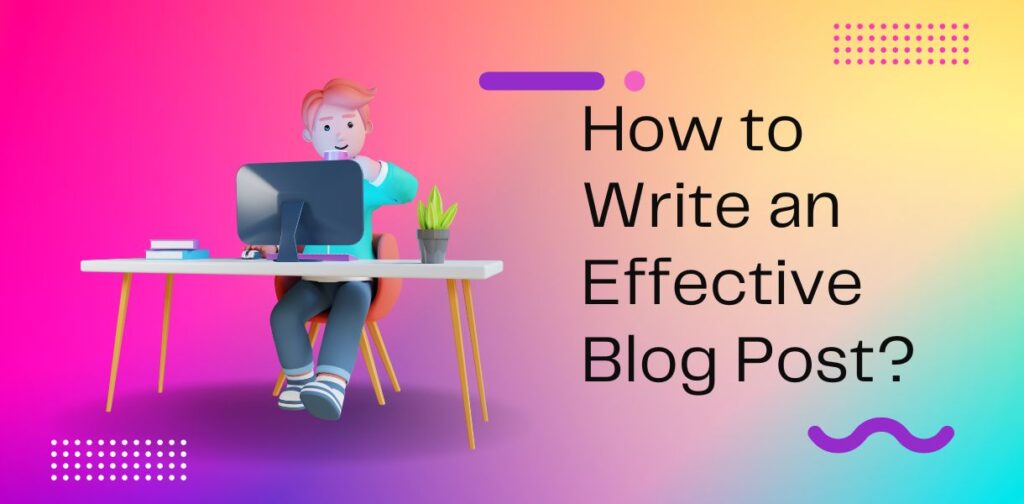Blogging is an effective way to engage with your audience and drive traffic to your website. However, with so much content available online, it can be challenging to stand out from the crowd. To help you create a blog post that engages and converts your readers, here are some key tips to keep in mind.

Here are the key points to keep in mind when writing an effective blog post:
1. Choose a compelling topic
2. Define your target audience
3. Craft a compelling headline
4. Write an engaging introduction
5. Use subheadings and formatting
6. Provide valuable information
7. End with a strong conclusion
8. Edit and proofread
Choose a compelling topic
The first step in writing a great blog post is to choose a topic that is both relevant to your audience and interesting enough to capture their attention. Consider what questions your target audience is asking, what problems they are trying to solve, and what information they may be seeking. Your blog post should provide them with valuable insights, tips, or solutions that they can’t easily find elsewhere.
Define your target audience
Knowing your target audience is crucial for creating content that resonates with them. Take the time to research your audience’s demographics, interests, and pain points, and tailor your content to their needs. When you write with your audience in mind, you can create content that speaks directly to them and encourages engagement.
Craft a compelling headline
Your headline is the first thing your readers will see, and it can make or break their decision to read your blog post. A compelling headline should be concise, clear, and promise a benefit or solution to the reader. Use power words to grab attention and create a sense of urgency or excitement.
Write an engaging introduction
Your introduction should draw readers in and convince them to keep reading. Start with a hook that piques their interest, such as a surprising fact, a question, or a personal story. Then, provide a brief overview of what the blog post will cover and how it will benefit the reader.
Use subheadings and formatting
Breaking up your content into smaller, easily digestible chunks can make it more accessible and engaging for readers. Use subheadings to organize your content and provide a clear structure for readers to follow. Formatting such as bold, italics, and bullet points can also help to emphasize important points and make your content more visually appealing.
Provide valuable information
Your blog post should provide readers with information that is valuable, informative, and actionable. Research your topic thoroughly and provide data, statistics, or case studies to support your claims. Use examples, anecdotes, and real-life stories to illustrate your points and make your content more relatable.
End with a strong conclusion
Your conclusion should wrap up your blog post and provide a clear takeaway for readers. Summarize the main points you’ve covered and emphasize the key benefits or solutions for the reader. You can also include a call-to-action to encourage engagement or provide additional resources for readers to explore.
Edit and proofread
Before publishing your blog post, make sure to edit and proofread your content carefully. Check for grammar, spelling, and punctuation errors, and ensure your content is easy to read and understand. Ask a friend or colleague to review your content and provide feedback if possible.
In conclusion, writing a blog post that engages and converts readers requires careful planning, research, and attention to detail. By following these key tips, you can create content that resonates with your audience, provides value, and encourages engagement. Remember to write with your audience in mind, provide valuable information, and edit and proofread your content carefully to ensure it’s of the highest quality.


